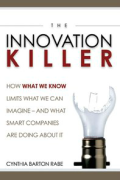My Account
Subscriptions
Summary Categories
Summary Collections
- Career & Life Satisfaction Collection
- Disruptive Innovation Collection
- Exceptional Leadership Collection
- Great Employees Only Collection
- Hidden Gems Collection
- Marketing Collection
- Must-Read Books for 2012 v1
- Must-Read Books for 2012 v2
- Must-Read Books for 2013
- Self-Help Collection
- Small Business Collection
- Strategic Assessment Collection
- Strategic Genius Collection
- Take Charge Collection
- Team Management Collection
- Ultimate Sales Collection
- Web Marketing Collection
Summary List
The Innovation Killer:How What We Know Limits What We Can Imagine... And What Smart Companies Are Doing About It
Cynthia Barton Rabe
Summarized December 2006
Type: [SUMMARY]
SKU: 12061
ISBN: 0814408834
Price: $12.50
Available Formats:




Purchase Summary
Summary Description
Today’s companies face a paradox: They need knowledge in order to innovate. And yet, knowledge kills innovation.
How can this be? Companies and teams rely on “what we know” and “the way we do things here” to speed decision-making and maintain a sense of order. But innovation demands change, risk taking, and sometimes even revolution.
It’s rare to find people within an organization who will challenge the company’s most cherished ideas and assumptions. As much as everyone lauds the concept of “thinking outside the box,” most of us think it’s a lot safer to stay inside the box.
In The Innovation Killer, Cynthia Barton Rabe presents a solution to this paradox. She advocates bringing in a “Zero-Gravity Thinker” -- an outsider to find new ways around problems and identify opportunities that employees can’t see.
Rabe heads Zero-G LLC, an innovation and strategy consulting firm. Over the past 20 years, she has held senior business and marketing management roles for consumer product and technology companies. She was Innovation Strategist for Intel Corporation and was part of the Eveready product management team that introduced the Energizer Bunny.
In this summary, we’ll explore the forces that weigh us down and make innovation so difficult, examine the three ideal characteristics of a Zero-Gravity Thinker, and explain how you can do your own “weightless thinking.”
 Member Log In
Member Log In